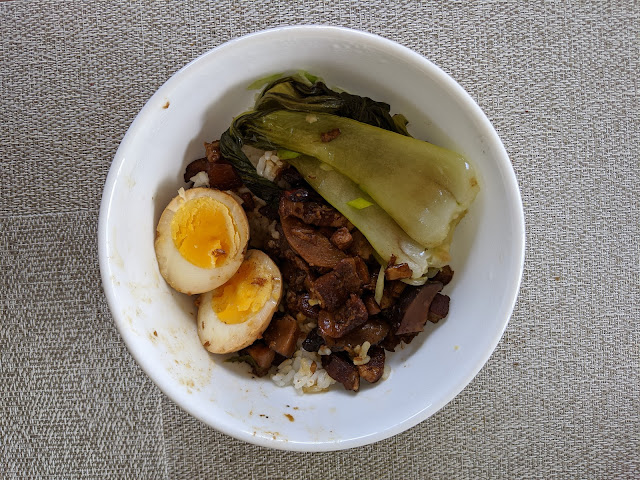Biang biang noodles, or potentially 油潑麵
I usually prefer rice over noodles, but after friends introduced me to a place called QQ Noodle, I realized that I really liked dry noodles (as opposed to soup ones) with spicy, savoury toppings. Basically anything with chili, garlic, meat, oil, or all of the above on chewy noodles was a winner in my book! After I tasted QQ Noodle's spicy garlic pork noodles (unfortunately forgot the Chinese name but it's like #24 on their menu!), I started looking for similar dishes in other Chinese restaurants. I quickly learned about biang biang mian (noodle base), and 油潑麵 (hot oil noodles), and 擔擔麵 (dan dan mian), and other varieties of noodles. All so good! And then, when quarantine hit and it was harder to procure such dishes, I started seeing friends making them at home instead—so I thought, why not!
I had never made Chinese noodles from scratch before, but I distinctly remember my old Vancouver housemate JL telling us it was easy as he proceeded to make some 板麵 (ban mian/hand-cut wide noodles, common in Malaysia/Singapore) from scratch using a wine bottle as a rolling pin (college-aged Rosanne was shocked—nay, shook—at how simple it was). Armed with that memory—and videos of Bay Area friends successfully recreating noodles at home—I dove into such a recipe as well. This ended up taking quite some time and coordination because a) the recipe I used was so detailed and b) I was attempting to make lamb cumin stir-fry to go along with it, but people: it was SO SIMPLE and SO TASTY!!!
Please make it now.
Notes:
- I doubled the noodle recipe so I also doubled the chili oil topping, but it ended up being way too salty (too much soy sauce). Next time, do not double the chili oil topping!
- Maybe make the lamb cumin stir-fry *after* the noodles so that it's hot when you eat it together haha.



Comments
Post a Comment